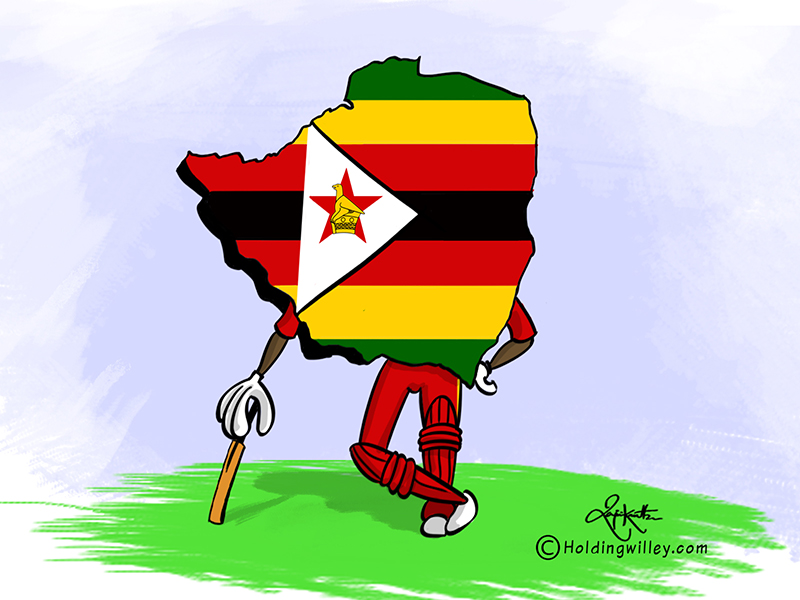 A dilapidated looking brown and yellow brick wall was the backdrop to a similar coloured couch that sat on a matching wooden floor. The golden World Cup trophy (the one that was unveiled for the first time, 20 years ago in England 1999) was placed on that floor, 10 men forming a semi-circle around it facing the camera – four in different shades of blue, three in varieties of green, one each in yellow, black and maroon – during the photoshoot on the eve of cricket’s biggest carnival in England. It was indeed a colourful setting.
A dilapidated looking brown and yellow brick wall was the backdrop to a similar coloured couch that sat on a matching wooden floor. The golden World Cup trophy (the one that was unveiled for the first time, 20 years ago in England 1999) was placed on that floor, 10 men forming a semi-circle around it facing the camera – four in different shades of blue, three in varieties of green, one each in yellow, black and maroon – during the photoshoot on the eve of cricket’s biggest carnival in England. It was indeed a colourful setting.
I’m not sure how many cricket tragics or romantics (whichever category you decide you fall into) missed the colour red in the setting. Red, the colour that was present in every cricket World Cup since the fifth one Down Under in 1992 till the last one in 2015, again held in Australia and New Zealand.
From Duncan Fletcher to John Traicos, Dave Houghton to Andy Flower, Alistair Campbell to Heath Streak, Prosper Utseya and twice Elton Chigumbura, all had represented Zimbabwe as skippers in the prior World Cups. This time, no one from the Southern African republic was leading the team in cricket's biggest limited over contest for the first time since 1983. Zimbabwe didn't qualify as one of the top 10 contestants for the World Cup.
But a throwback to happier times first. Times when Zimbabwe made an impression, when those impressions were impactful, whether they went over the line or not. The Zimbabwean red always shone bright. In their first match against Australia in 1983 they beat them by 13 runs. Of course, Duncan Fletcher’s team had the eventual champions five down before India chased 156. In their second encounter with India in the same tournament they had Indians huffing and puffing at 17 for five before Kapil Dev played one of the finest crisis innings of World Cup history at Tunbridge Wells.
In 1987 Zimbabwe lost their first game against New Zealand by just 3 runs. Then, the second time around, New Zealand won the chase by reaching the total they posted only in the 48th over.
In 1992, they surprised everyone by posting their maiden 300-plus score of the tournament against Sri Lanka, courtesy knocks from Andy Flower (115 not out), Kevin Arnott (52) and Andy Waller (83 not out) at New Plymouth. Though Sri Lanka won that game. Later in the tournament, chicken farmer Eddo Brandes claimed four for 21 to dismiss England for 125 in a low-scoring game at Albury. England were already in the semi-finals, but Zimbabwe did well to notch their second victory in World Cup cricket
Four years later they again came back to the subcontinent in a jazzier version of the tournament than the 1987 one. Here they only beat Kenya, but their leg-spinner Paul Strang caused a flutter in the game against West Indies at Hyderabad, where he claimed four wickets in a spell of 7.3-1-40-4 before West Indies managed to chase down 151.
It was in 1999, in the United Kingdom, where they played their best cricket of all the World Cups they have taken part in. They beat Kenya, shocked India and thrashed South Africa in the round-robin stage.
It was in the Super Six stage of this tournament that they nearly meted out a similar treatment to the Aussies. Chasing a 304-run target, Zimbabwe looked on course to cause another upset as, by the end of the 28th over, they were 153 for one with Neil Johnson and Murray Goodwin at the crease. The Aussies did what they did best in those years — grab wickets in a heap — and five wickets fell for 47 as Zimbabwe lost the plot. Although the Australians won, the Man of the Match award went to Johnson for his 100, which put the fear into Steve Waugh's team. Zimbabwe was tied on 5 points with New Zealand for a potential spot in the semi-final, but the Kiwis went ahead because of a slightly better run-rate.
It’s ironic that Zimbabwe’s downfall in the sport began when they became World Cup hosts in 2003, along with South Africa and Kenya. The political unrest under Robert Mugabe’s regime ensured the men in red wouldn’t look back at that tournament with fond memories. In fact, most of those who formed the core of that team left the sport for cricketing reasons. Since then, in the next three World Cups, Zimbabwe—who could have achieved greater heights—became also-rans.
It’s truly sad that the result of those troubled times is that the colour red, the Zimbabwean red, was not represented amongst the blues, greens, yellow, black and maroon on the field in UK.